Abstract
A sample of 315 asthmatic children, representative of the whole range of asthma in childhood, and a control group of 82 children were studied clinically and physiologically from 7 to 14 years of age. The asthmatic children were arbitrarily classified into four grades according to the relative frequency and persistence of their asthma to 14 years of age. Each of these grades could be more clearly defined on analysis of other clinical and physiological characteristics.
The characteristics of severe persistent asthma were: onset usually in the first three years of life, a high frequency of attacks in the initial year, clinical and physiological evidence of persisting airways obstruction and pulmonary hyperinflation, chest deformity, and impairment of growth. By contrast, mild asthma usually began later in childhood, was episodic, and there was little or no evidence of airways obstruction between attacks. The attacks generally stopped before 10 years of age. In between these two extremes were two intermediate grades.
The clinical and physiological characteristics of each grade of asthma at 14 years of age were usually evident by 10 years, and in the most severe grade by 7 years of age. These characteristics provide a sound basis for assessment, management, and prognosis.
Full text
PDF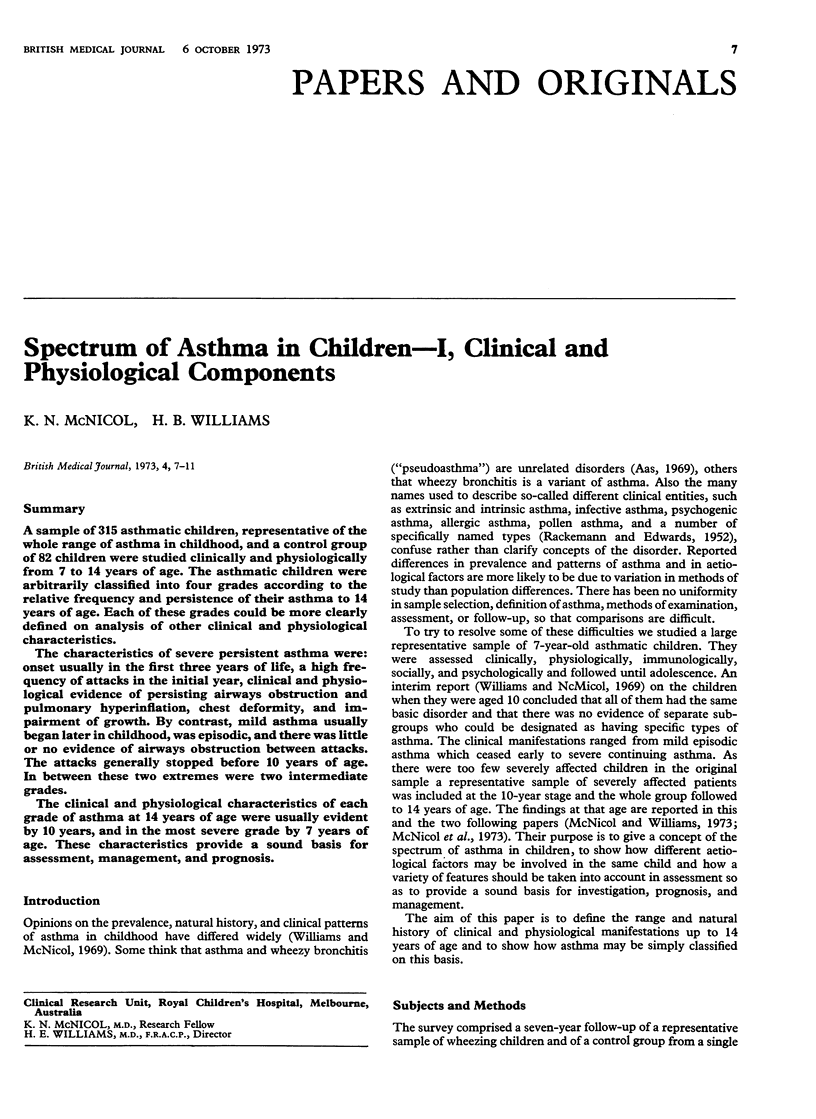
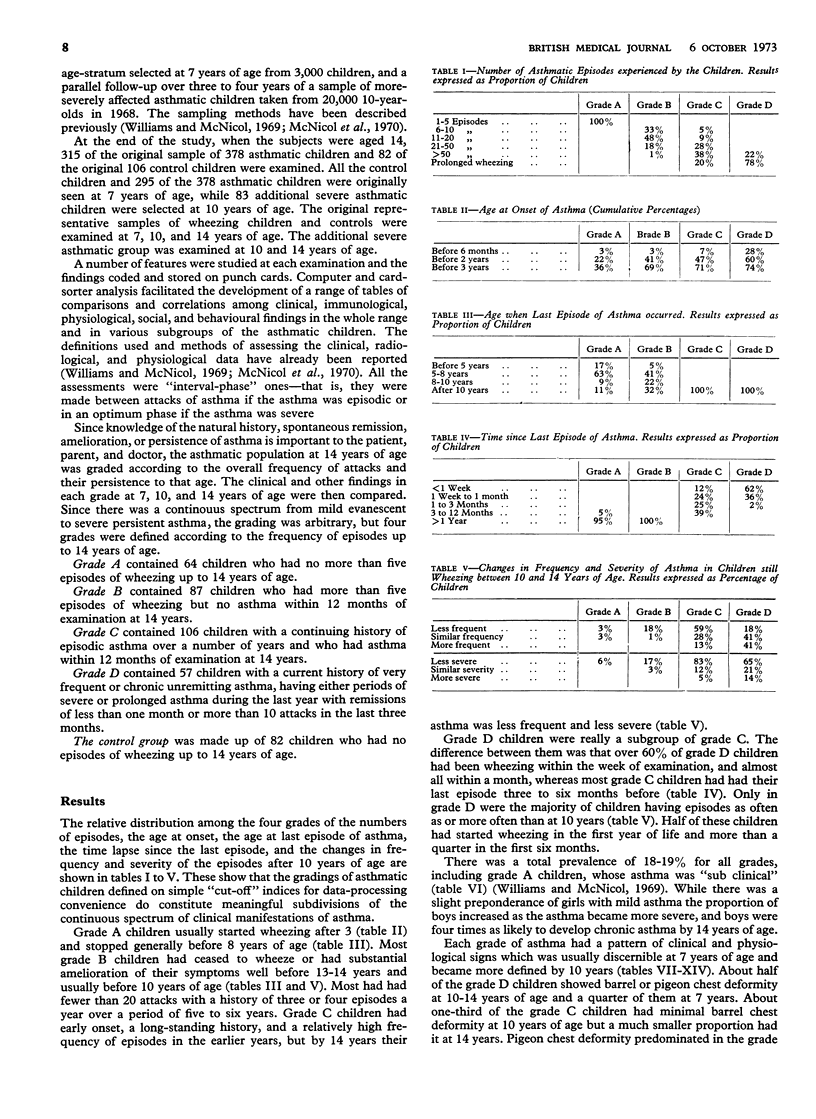
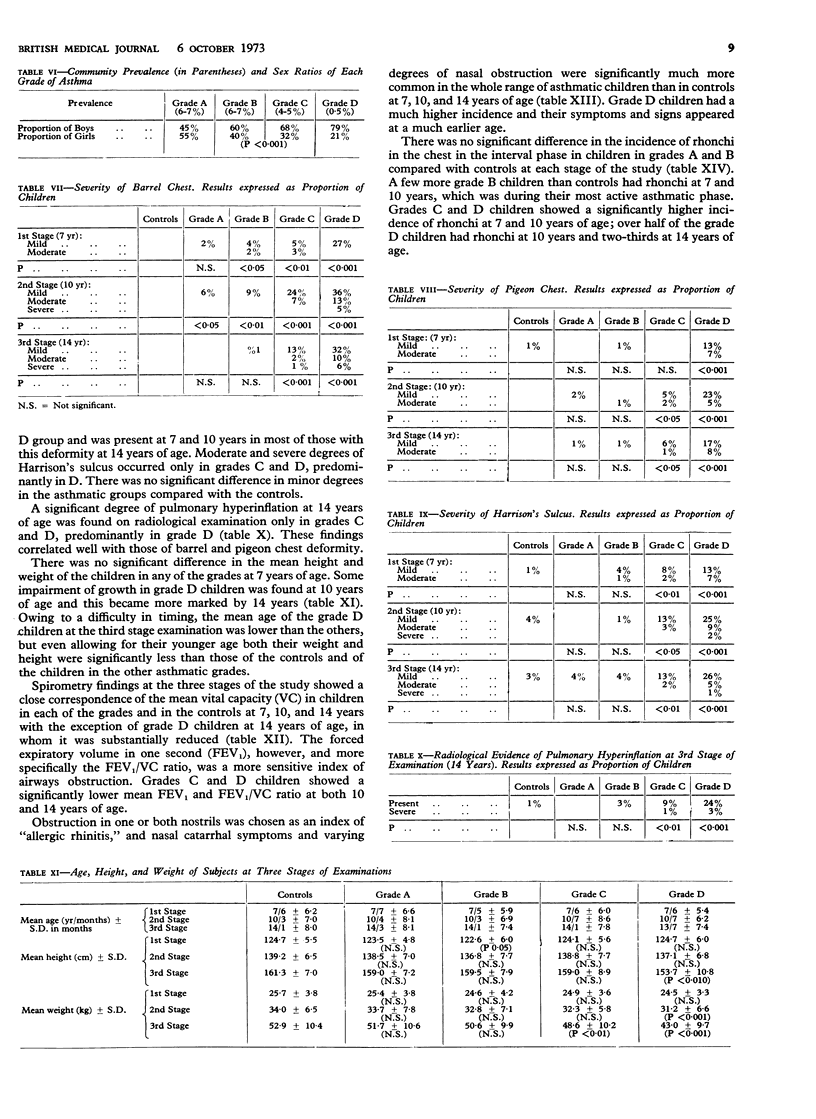
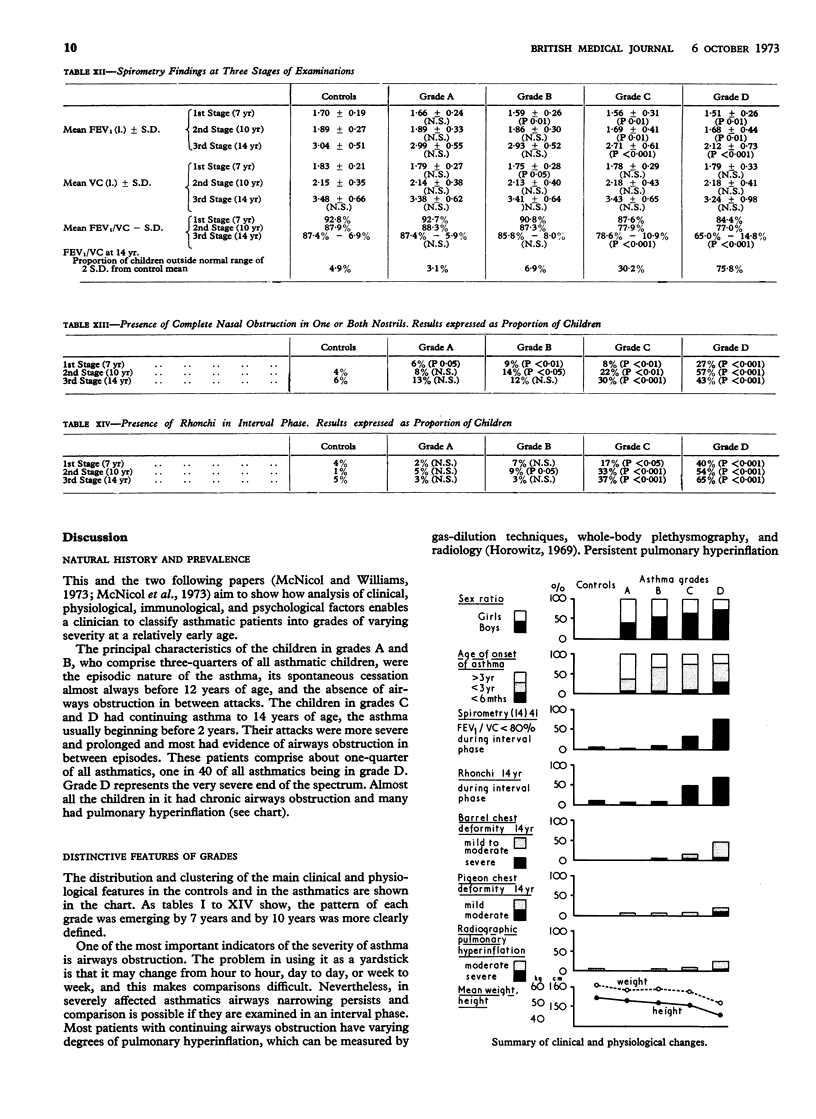
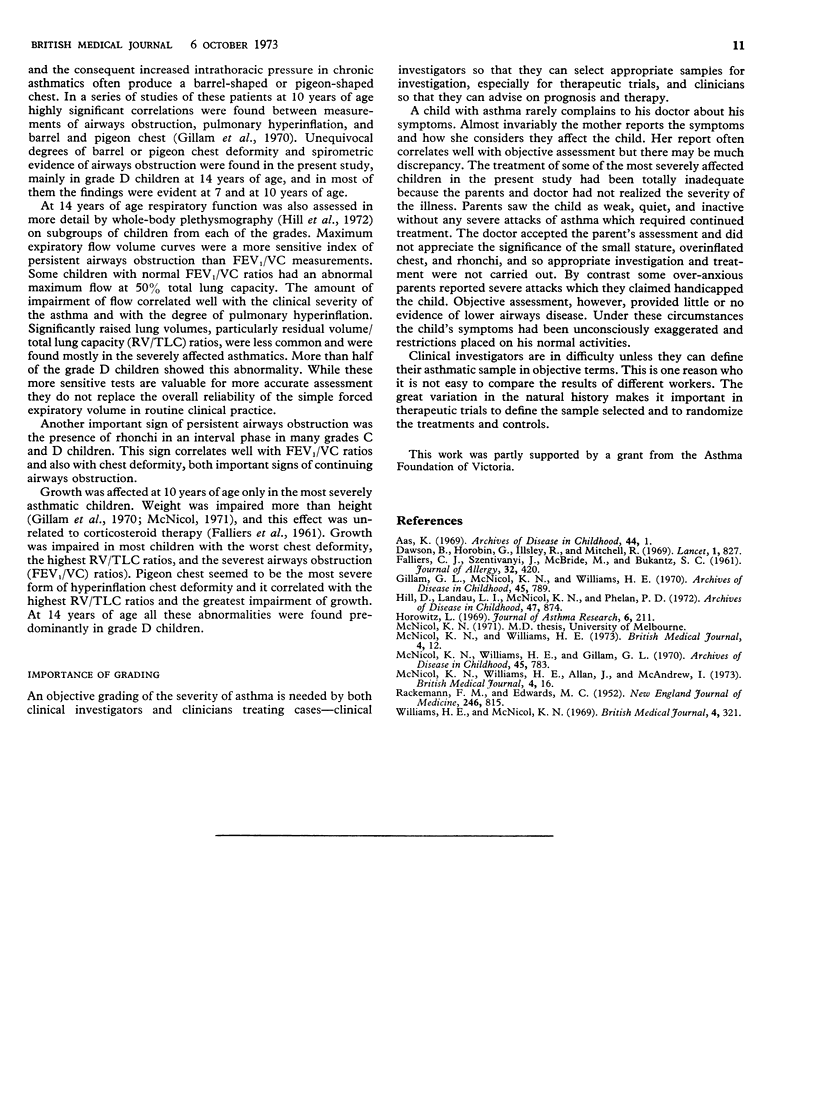
Selected References
These references are in PubMed. This may not be the complete list of references from this article.
- Aas K. Allergic asthma in childhood. Arch Dis Child. 1969 Feb;44(233):1–10. doi: 10.1136/adc.44.233.1. [DOI] [PMC free article] [PubMed] [Google Scholar]
- Dawson B., Illsley R., Horobin G., Mitchell R. A survey of childhood asthma in Aberdeen. Lancet. 1969 Apr 19;1(7599):827–830. doi: 10.1016/s0140-6736(69)92082-0. [DOI] [PubMed] [Google Scholar]
- FALLIERS C. J., SZENTIVANYI J., McBRIDE M., BUKANTZ S. C. Growth rate of children with intractable asthma. Observations on the influence of the illness and its therapy with steroids. J Allergy. 1961 Sep-Oct;32:420–434. doi: 10.1016/0021-8707(61)90020-x. [DOI] [PubMed] [Google Scholar]
- Gillam G. L., McNicol K. N., Williams H. E. Chest deformity, residual airways obstruction and hyperinflation, and growth in children with asthma. II. Significance of chronic chest deformity. Arch Dis Child. 1970 Dec;45(244):789–799. doi: 10.1136/adc.45.244.789. [DOI] [PMC free article] [PubMed] [Google Scholar]
- Hill D. J., Landau L. I., McNicol K. N., Phelan P. D. Asthma--the physiological and clinical spectrum in childhood. Respiratory function studies in its assessment. Arch Dis Child. 1972 Dec;47(256):874–881. doi: 10.1136/adc.47.256.874. [DOI] [PMC free article] [PubMed] [Google Scholar]
- Horowitz L. Chronic obstructive bronchopulmonary disease (emphysema?) in children with asthma. J Asthma Res. 1969 Jun;6(4):211–217. doi: 10.3109/02770906909104135. [DOI] [PubMed] [Google Scholar]
- McNichol K. N., Williams H. E., Allan J., McAndrew I. Spectrum of asthma in children. 3. Psychological and social components. Br Med J. 1973 Oct 6;4(5883):16–20. doi: 10.1136/bmj.4.5883.16. [DOI] [PMC free article] [PubMed] [Google Scholar]
- McNichol K. N., Williams H. E. Spectrum of asthma in children. II. Allergic components. Br Med J. 1973 Oct 6;4(5883):12–16. doi: 10.1136/bmj.4.5883.12. [DOI] [PMC free article] [PubMed] [Google Scholar]
- McNicol K. N., Williams H. E., Gillam G. L. Chest deformity, residual airways obstruction and hyperinflation, and growth in children with asthma. I. Prevalence findings from an epidemiological study. Arch Dis Child. 1970 Dec;45(244):783–788. doi: 10.1136/adc.45.244.783. [DOI] [PMC free article] [PubMed] [Google Scholar]
- RACKEMANN F. M., EDWARDS M. C. A follow-up study of 688 patients after an interval of twenty years. N Engl J Med. 1952 May 22;246(21):815–contd. doi: 10.1056/NEJM195205222462104. [DOI] [PubMed] [Google Scholar]
- Williams H., McNicol K. N. Prevalence, natural history, and relationship of wheezy bronchitis and asthma in children. An epidemiological study. Br Med J. 1969 Nov 8;4(5679):321–325. doi: 10.1136/bmj.4.5679.321. [DOI] [PMC free article] [PubMed] [Google Scholar]


